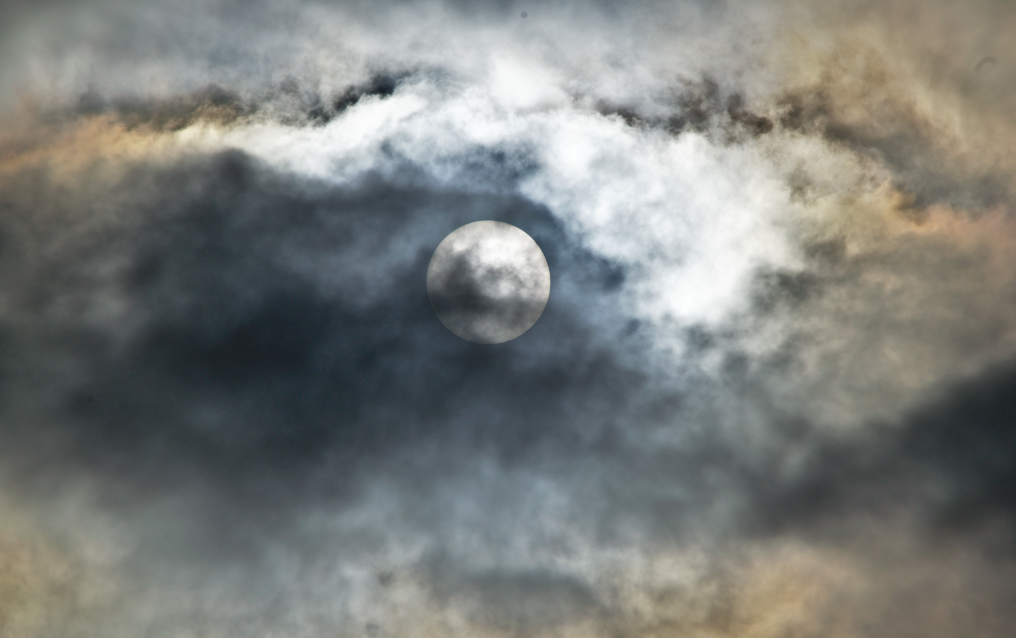Mercury transit on November 11, 2019
This week commenced with a rare celestial event, which is the transit of Mercury across the solar disk. Unlike the last event such as this, what occurred exactly 3,5 years ago, I had no chance to see it 100%. In the UK the event started just after noon and continued down to the sunset (Pic. 1).
Because of a short day, as well as the Sun position in the southern sky, the best conditions to see this event fall in South America. Both in Europe and the United States people could see the part of the transit.
I decided to work that day and go nowhere in case of bad weather. Fortunately, it wasn’t so bad. I could see the Mercury at least through the thin clouds veiling the Sun. Having some experience in this kind of photography, I could get a few decent images showing how the first planet moves across the solar disk. On the other hand, there were also a couple of moments when the sky towards the solar direction was free of clouds for a longer period. The best weather at the Cambridge Research Park, where I work occurred before the mid-transit. Eventually, though the rain came later, hiding the Sun before 3.30 pm and revealing it just before sunset.
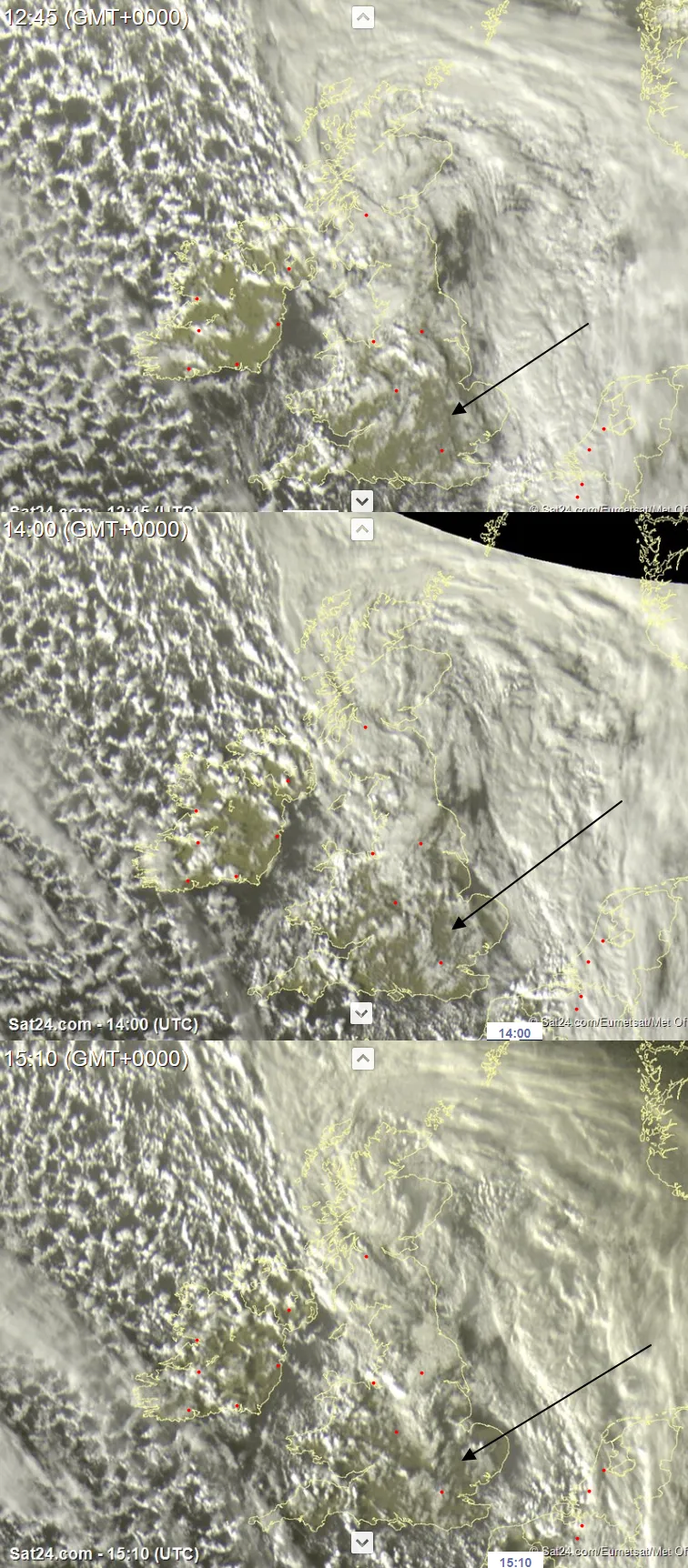
Pic. 3 The cloudiness circumstances above the UK as seen by Eumetsat. The black arrow shows my observation place (Sat24.com).
The group of clouds was moving from the northwest. The last image shows the best weather conditions in the Cambridgeshire area, where I attend to watch the transit.
Now I would like to share some image sequences from this rare celestial event.
The parameters are 300mm 1/4000s, ISO 100, f/29 for a clear view, and 1/4000, ISO 100, f/18 for Baader 5.0. Both have been cropped.

Pic. 4 12:45 UT
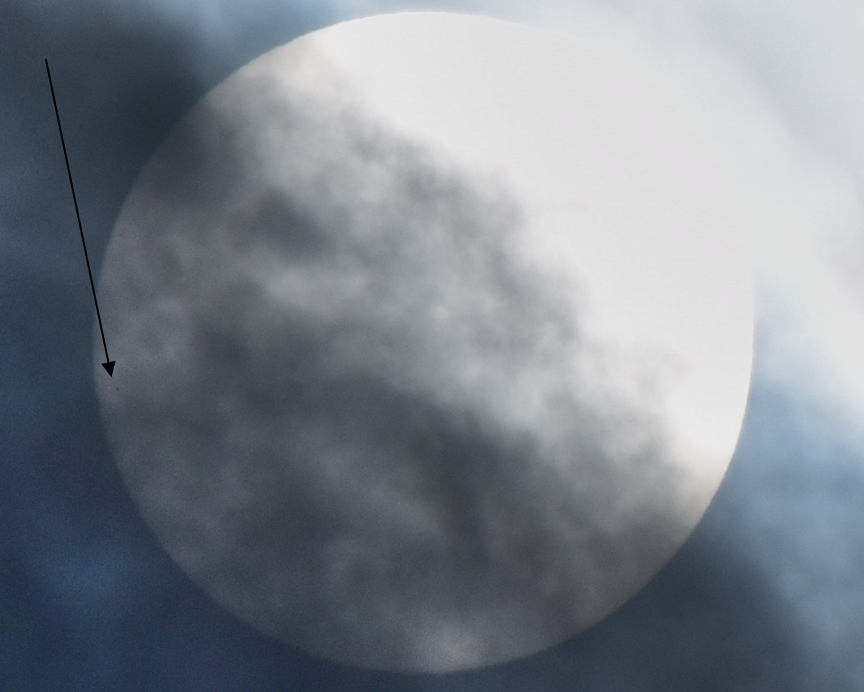
Pic. 5 12:47 UT

Pic. 6 13:11UT
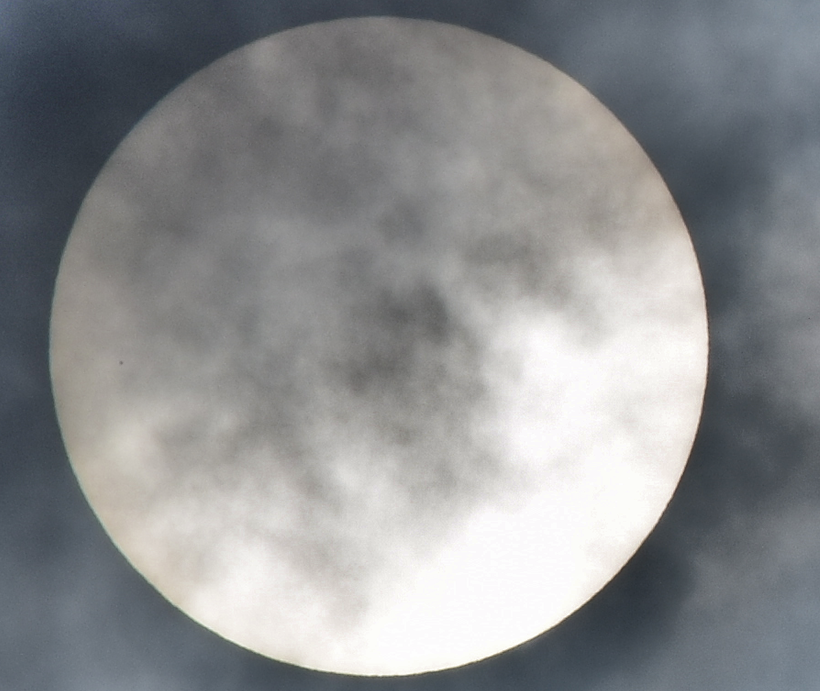
Pic. 7 13:12 UT

Pic. 8 13:16 UT
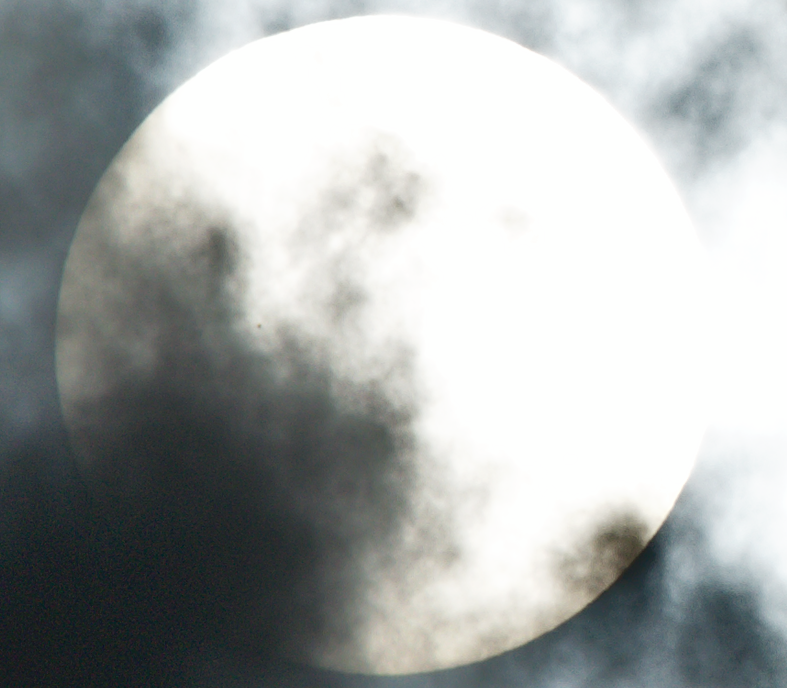
Pic. 9 14:18 UT
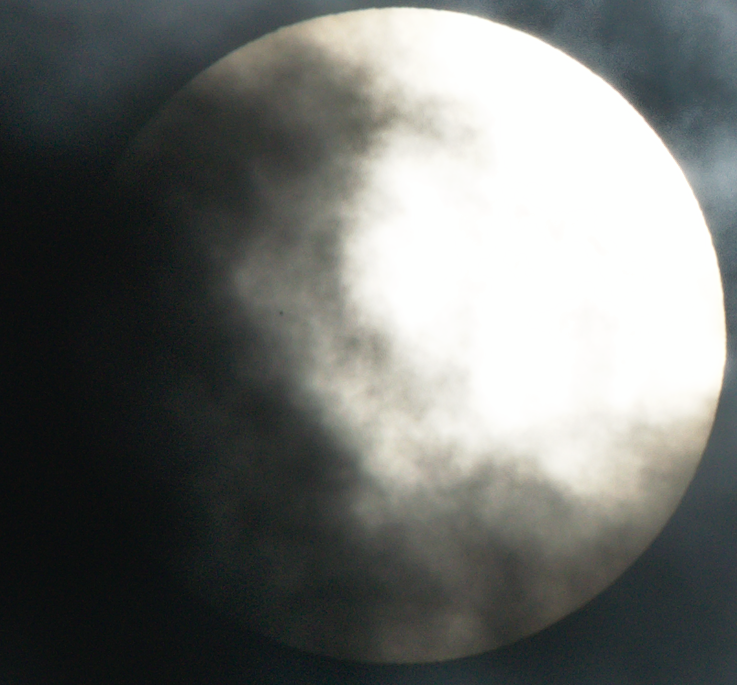
Pic. 10 14:23 UT

Pic. 11 15:14 UT
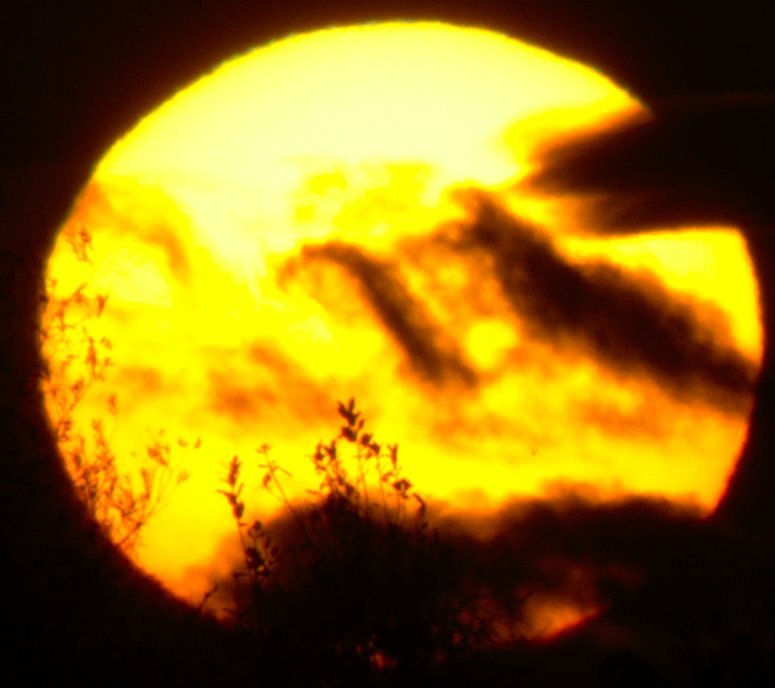
Pic. 12 16:04 UT Mercury with the smallish green rim just above the solar disk.
Let’s take a look at the weather that day in general (Pic. 13-17).
There are about 5 sequences. I couldn’t afford more, because I was working this day.
The last one was the most interesting. The sun was about to set behind the clouds, but just before, when some smallish pieces of cloud were moving across the solar disk I could spot the position of Mercury on the right side of the Sun. On the opposite side on the top, I spotted another interesting thing, which is a green rim (Pic. 18, 19).


Pic. 18, 19 The sequence of pictures presenting the Mercury’s position on the solar disk at the moment of my observations. The red transparent line shows the visual track of the first planet across the solar disk, which was seen from one observation position.
The green grim (Pic. 12) is produced by different densities of the atmospheric layers, through them the Sun is shining just before sunset. This different density of atmospheric layers causes the refraction phenomena too, which leads to a change in the shape of the solar disk, going to set. Alongside it, the colors are refracted, making a curious layout across the Sun. The red and orange colors are refracted less intensively, so they appear at the lower part of the Sun. More strong refraction of blue and green, which appear always at the upper edge of the Sun. Both the refraction phenomena and atmospheric optics related to this are going to be developed in the future.

Pic. 20 The path of Mercury, crossing the solar disk on November 11, 2019 (Fred Espenak/ Eclipsewise.com).
As a summary of my short observation, I made a stack of 5 major pictures, showing the Mercury movement across the Sun. It doesn’t look as per the template path as shown above (Pic. 20). A major explanation of this is the solar path on the sky and the Sun’s rotation against the horizon. Because my camera was set vertically to the horizon, the solar disk position rotated a bit, curving the visual Mercury’s path as a result. The pattern of this phenomenon is shown in the images below (Pic. 20, 21 ), generated by the Cartes du Ciel Sky Charts 4.0 software.
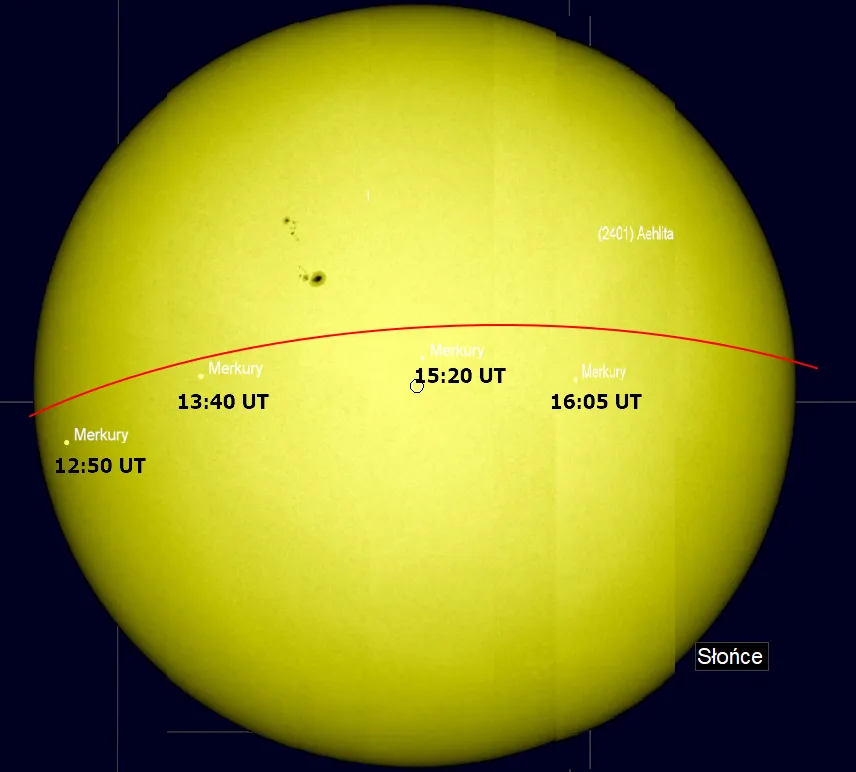
Pic. 21 The estimated position of the Sun with transiting Mercury as seen from East UK according to Cartes du Ciel 4.0.

Pic. 22 Major 2019 Mercury transit circumstances above Eastern UK according to Cartes du Ciel 4.
It’s analogous to the star constellations, which move across the Sky throughout their path above the horizon. Their position looks completely different after rising against the time when they are about to set (Pic.23 ).
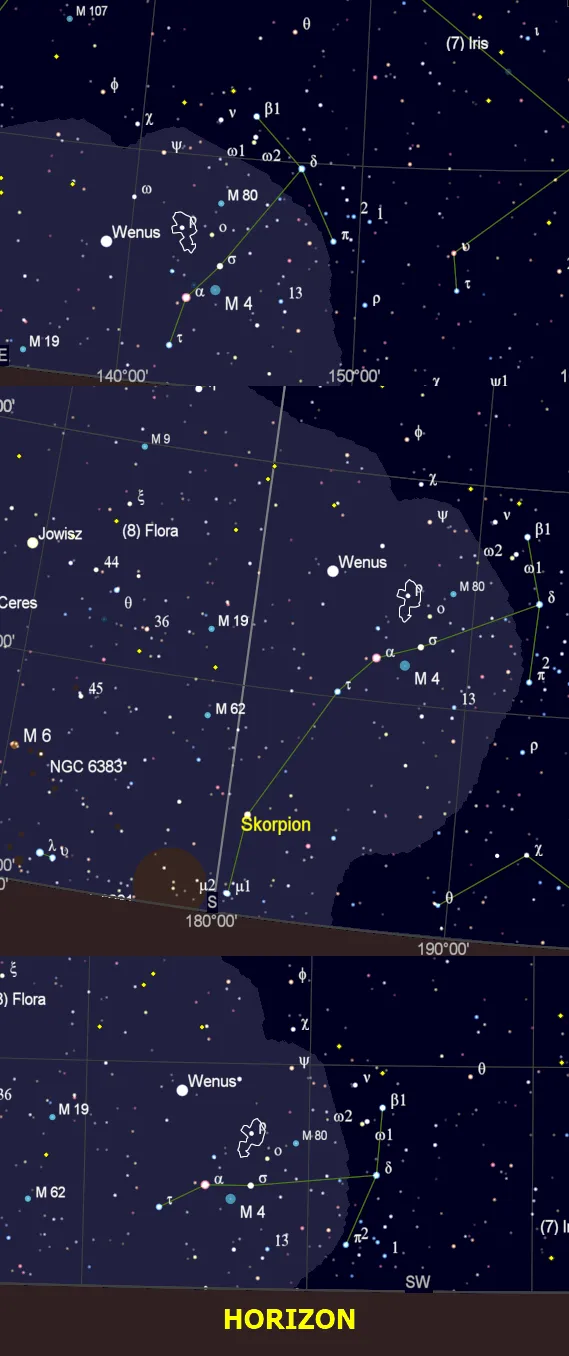
Pic. 23 The visual track of the Scorpius constellation in the sky against the horizon (Cartes du Ciel Sky Charts 4.21).
If you observe the sky from the northern hemisphere, this effect is much better visible for the stars trailing across the southern sky and another way around. Because the Sun in November moves through the southern sky, this effect was better expressed during this transit.
I am glad to carry on the observation, which brought something new to me. Apart from the green rim seen just before sunset, the curved path of the first planet was quite intriguing. I couldn’t see it previously, because I watched the transit shortly twice in the afternoon as well as when I saw the rising Sun with Venus inside.
Mariusz Krukar
Links:
Read also:
- Transit of Mercury – 9 May 2016
- Transit of Venus – have you seen this celestial event?
- Photography of the Sun through natural filters


